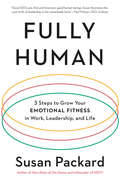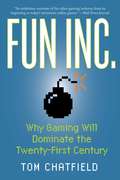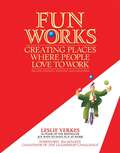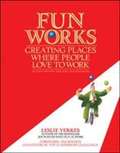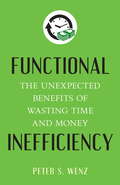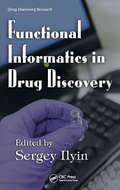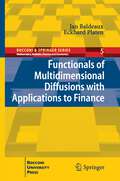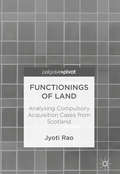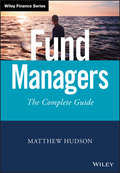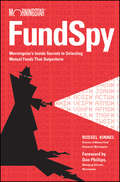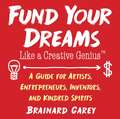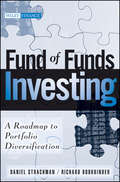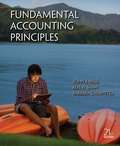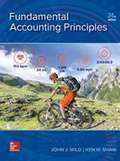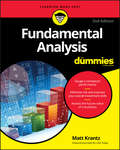- Table View
- List View
Fully Human: 3 Steps to Grow Your Emotional Fitness in Work, Leadership, and Life
by Susan PackardHGTV cofounder Susan Packard launches the next chapter in emotional intelligence (EQ), and shows you how to increase your personal satisfaction and productivity—in work and life—via her three-step path toward EQ Fitness. Emotions can sink us, or they can power us like fuel to succeed. Many of us show up for work, and life, feeling lonely even in a room full of people, or bringing unproductive emotions into work, like anger or fear. You don’t have to feel this way. Susan Packard offers an accessible new guidebook to grow your emotional fitness, and it’s arrived just in time, as technology is quickly becoming our main interface for communication. No matter where you are in your career, success is an inside job. Packard lays out how to develop interdependent work relationships, and for leaders, how to build healthy company cultures. Packard introduces us to successful people, and companies, that are rich with ‘connector’ emotions like hope, empathy and trust-building. She tackles unconventional topics, like how workaholism keeps us emotionally adolescent, and how forgiveness belongs in the workplace too. Packard shares her EQ Fit-catalyzed success at HGTV and the stories of the executives she coaches in mindfulness and other emerging techniques, and she teaches an ‘inside out’ practice of self-discovery, which helps you uncover unproductive emotions, and dispel them. The best leaders balance power and grace, and everyone can effectively use resilience--an ability to endure tough situations and make tough decisions, and vulnerability, a willingness to open up, change, and admit when we need help. She offers new tools to bring our strongest emotional selves to work each day.
Fun Inc.: Why Gaming Will Dominate the Twenty-First Century
by Tom Chatfield"An ambitious overview of the videogaming industry, from its beginning to today's immersive online games."--Wall Street Journal Despite the recession, video games continue to break records--and command unprecedented amounts of media coverage. The U.S. is the world's biggest video games market and manufacturer, with a market now worth over $20 billion annually in software and hardware sales--more than quadruple its size in the mid 1990s. World of Warcraft now boasts over 11 million players worldwide, and over $1 billion per year in revenues. Gaming is flourishing as a career and a creative industry as well. 254 U.S. colleges and universities in 37 states now offer courses and degrees in computer and video game design, programming and art. Video games are increasingly for everyone: 68% of American households now play computer or video games, while the average game player is 35 years old and has been playing games for twelve years. Against the popular image, too, 43% of online U.S. game players are female. The U.S. military alone now spends around $6 billion a year on virtual and simulated training programs, based around video games and virtual worlds. The budgets for developing the biggest games can now top the $100 million mark and are snapping up some of the biggest names in film--from Stephen Spielberg to Peter Jackson.
Fun Works: Creating Places Where People Love to Work
by Leslie YerkesLeading-edge organizations have discovered that fun can--and does--translate into bottom line success. By harnessing the power of fun, companies find they can better retain employees and customers, motivate teams, improve productivity, increase innovation, and create a sense of community. Leslie Yerkes details precisely how eleven successful companies--including Southwest Airlines, Pike Place Fish, Isle of Capri Casinos, EmployEase, and Prudential--have integrated fun into the normal course of business. This new edition provides updates on how these same companies have grown, prospered, and continued to thrive--in spite of national tragedies, natural disaster, growing competition, and changing economic conditions--in part because of the culture they have created through what Yerkes calls "The Fun/Work Fusion." Yerkes illustrates eleven principles--from capitalizing on the spontaneous to hiring good people and getting out of their way--that will inspire you to inject a sense of playfulness and joy into your workplace. Full of real-life examples, strategies, ideas, resources, tools, tips, and techniques, Fun Works will help any company in any industry become a place where people love to work.
Fun Works: Creating Places Where People Love to Work (2nd edition)
by Leslie YerkesDemonstrates how 11 successful companies, including Southwest Airlines, Pike Place Fish, Isle of Capri Casinos, and Prudential, have integrated fun into the normal course of business and shows how this has translated into improved results across the board. The book includes b&w photos and assessment worksheets, plus lists of books and leaders in the field. Yerkes is president of an organizational development firm. Annotation c. Book News, Inc., Portland, OR (booknews.com)
Function over Form: Using Nature's Rules to Fulfill Customers' Functional Needs and Achieve Sustainable Competitive Advantage
by Gregory C. UnruhIf you have already developed a sustainable product platform based on an economically viable value cycle, your traditional business model may no longer serve the full needs of your business. When you are selling a product that you want to recover in the future in order to provide the raw materials necessary for the next production cycle, what exactly is happening in the sales transaction? You need to adopt a business model that takes this recovery phase into account--to shift your thinking away from traditional concern with the physical form through which a company delivers value, and toward a comprehensive understanding of the functional value it creates. This chapter will provide a holistic plan for reevaluting the function of your products, including models for interface value cycle, how your products' market can change from customers to "custopliers" (customers who ultimately provide the raw materials you will reuse in product production), and solutions to possible management challenges, and demonstrates your new model's potential for higher margins, more stable streams of revenue, and long-term relationships with customers. This chapter was originally published as Chapter 5 of "Earth, Inc.: Using Nature's Rules to Build Sustainable Profits."
Functional Inefficiency
by Peter S. WenzHow can we reduce unemployment? As this insightful and counterintuitive book shows, the surprising answer is inefficiency. Some of the most labor-intensive sectors of the economy, the author notes, are also the most inefficient. But this inefficiency is functional--rather than impairing the economy, it bolsters employment and fosters economic growth.Technological progress increases efficiency and reduces the need for workers in manufacturing, mining, agriculture, and many services. So how do we keep people working? By maintaining inefficiencies in other areas, such as in our systems of transportation and healthcare. The author documents the waste of time and money in hospital systems, the insurance and pharmaceutical industries, automotive travel, and road construction and maintenance. These inefficiencies are tolerated because they provide a lot of jobs and promote economic growth, making them functional inefficiencies.Some of these inefficient systems come with added environmental and health costs, meaning we sacrifice more than simple efficiency for the sake of jobs. Our inefficiencies may be functional, argues Peter Wenz, but they are too often harmful for us as well.The good news is that most of these inefficiencies can be reduced without increasing unemployment or impairing economic growth. Wenz explores different methods of combating unemployment, evaluating each method carefully to determine its basic efficiencies and inefficiencies, as well as its impact on human wellbeing and on the environment. He also assesses whether it is culturally and politically acceptable and actually serves to reduce unemployment. Some inefficiency will remain, he concludes, but its negative impacts can be lessened through increased investment in physical and human infrastructure.Functional Inefficiency offers a wealth of details and a unique analysis of our economic system, plus hope for our future prospects through reduced inefficiency.From the Hardcover edition.
Functional Informatics in Drug Discovery (Drug Discovery Ser. #Vol. 9)
by Sergey IlyinIntegrating various technologies with informational systems provides vast improvements to the overall research and development that occur in the biopharmaceutical industry. One of the first books to explore this area, Functional Informatics in Drug Discovery examines all aspects of technology integration and information flow in a biopharmaceutical
Functional Instability or Paradigm Shift?
by Amitava SarkarThe study investigates the working of the Indian stock market in recent years and attempts to look for functional instability, if any, embedded in the stock market. Specifically, it explores to discern whether there been any significant change in recent years in Indian stock market and the nature and characteristics of such changes, if any. It chooses the nine year period from 1999 to 2008. Over this period, stock market witnessed some major price changes: one in late 1999 that ended in mid 2001, another that commenced from mid 2004 and a recent one that in effect commenced from early 2008. There is significant volatility in the market with presence of risk premium;there is asymmetric impact. The market responds more to the negative shocks. The global stock market is having its influence on Indian stock market. The impact of developed country effect, particularly, that of US stock market has been the most prominent. There is some evidence for regional contagion. When we look at the domestic sectors, we see that the traditional sectors, -Capital Goods and Consumer Durables,are the two most predominant sectors. Other sectors, particularly the IT sector, have only a mild, almost insignificant impact on market volatility and transmits very little of its volatility to other sectors.
Functional Integration: Getting All the Troops to Work Together
by Benson P. ShapiroExplains the need for functional integration and the four ways to obtain it. A bibliography is provided. The note is managerial rather than scholarly in tone.
Functional Materials in Amperometric Sensing
by Renato Seeber Fabio Terzi Chiara ZanardiAmperometric sensors, biosensors included, particularly rely on suitable electrode materials. Progress in material science has led to a wide variety of options that are available today. For the first time, these novel functional electrode coating materials are reviewed in this monograph, written by and for electroanalytical chemists. This includes intrinsically conducting, redox and ion-exchange polymers, metal and carbon nanostructures, silica based materials. Monolayers and relatively thick films are considered. The authors critically discuss preparation methods, in addition to chemical and physical characteristics of these new materials. They present various examples of emerging applications in electroanalysis. Due to its comprehensive coverage, the book will become an indispensable source for researchers working on the development and even proper use of new amperometric sensor systems.
Functional Safety and Proof of Compliance
by Thor Myklebust Tor StålhaneThis book aims to facilitate and improve development work related to all documents and information required by functional safety standards. Proof of Compliance (PoC) is important for the assessor and certification bodies when called up to confirm that the manufacturer has developed a software system according to the required safety standards. While PoC documents add functionality to the product neither for the developer nor for the customer, they do add confidence and trust to the product and ease certification, and as such are important for the product’s value. In spite of this added value, the documentation needed for PoC is often developed late in the project and in a haphazard manner. This book aims at developers, assessors, certification bodies, and purchasers of safety instrumented systems and informs the reader about the most important PoC documents. A typical PoC documentation encompasses 50 to 200 documents, several of which are named in the safety standards (e.g., 82 documents in IEC 61508:2010 series, 101 documents in EN 5012X series and 106 work products in ISO 26262:2018 series). These documents also include further references, typically one to twenty of them, and the total number of pages developed by the manufacturer varies between 2000 and 10000 pages. The book provides guidance and examples what to include in the relevant plans and documents.
Functional Urban Areas in Poland: Demographic Trends and Migration Patterns (The Urban Book Series)
by Sławomir Kurek Mirosław Wójtowicz Jadwiga GałkaThis book explores demographic changes in Functional Urban Areas (FUAs) in Poland since 1990. Functional Urban Areas, introduced by ESPON, refer to functional territorial units that can be defined as travel-to-work-area, representing strong integration between urban cores and their immediate hinterland. The functional urban area consists of a city plus its commuting zone. It fills a significant gap in the academic literature by providing a deep and thorough analysis of the process of population change in Polish FUAs over the past 30 years. In particular, this empirical research work addresses population growth and decline; the main components of population growth including fertility, mortality and migration; age composition; and the pace of population ageing. The book argues that the transformations of urban structures are triggered by second demographic transition (SDT) and suburbanization processes. Based on data from the Central Statistical Office, this comparative study on FUAs in Poland, which employs a division into core and commuting zones, reveals essential similarities and differences in population development, making it possible to construct a demographic typology of FUAs and investigate their spatial arrangements. A unique and innovative book, it will appeal to geographers, demographers, urbanists, city planners and policymakers, as well as students, academic researchers and others involved in urban studies.
Functionals of Multidimensional Diffusions with Applications to Finance
by Eckhard Platen Jan BaldeauxThis research monograph provides an introduction to tractable multidimensional diffusion models, where transition densities, Laplace transforms, Fourier transforms, fundamental solutions or functionals can be obtained in explicit form. The book also provides an introduction to the use of Lie symmetry group methods for diffusions, which allows to compute a wide range of functionals. Besides the well-known methodology on affine diffusions it presents a novel approach to affine processes with applications in finance. Numerical methods, including Monte Carlo and quadrature methods, are discussed together with supporting material on stochastic processes. Applications in finance, for instance, on credit risk and credit valuation adjustment are included in the book. The functionals of multidimensional diffusions analyzed in this book are significant for many areas of application beyond finance. The book is aimed at a wide readership, and develops an intuitive and rigorous understanding of the mathematics underlying the derivation of explicit formulas for functionals of multidimensional diffusions.
Functioning of the International Monetary System
by Jacob A. FrenkelA report from the International Monetary Fund.
Functionings of Land: Analysing Compulsory Acquisition Cases from Scotland
by Jyoti RaoThis book focuses on the 'functionings' and capabilities generated from land by their owners and the challenge in satisfactorily recreating these through the compensation paid in the case of compulsory acquisition of private land. These discussions initiate a new debate on the insufficiency of existing approaches to compensation that are ignorant of the losses of ‘capabilities’ and ‘functionings’. The relationship between land, ownership and well-being of an individual is explained through the identification of various ‘functionings’ associated with the ownership of land in the context of Scotland. Contemporary approaches to compensation, founded on the utilitarian argument, have led to dissatisfactory outcomes for the affected landowners. Discussions in this book shift the focus to equalizing the share of burdens and benefits for each individual member of the society, through equalization of human capabilities. This book will be of value to development economists, researchers, policy makers and law makers concerned with compulsory acquisition of land.
Functions of Sports Clubs in European Societies: A Cross-National Comparative Study (Sports Economics, Management and Policy #13)
by Jeroen Scheerder Siegfried Nagel Karsten Elmose-Østerlund Bjarne IbsenThis book takes a closer look at the societal functions of sports clubs by using the broad range of empirical data of a comparative study. There is a limited amount of up-to-date knowledge on the functions of sports clubs and their potential to promote public health, social cohesion and democratic participation through volunteering and thus contribute to public welfare in European societies. Most of the existing studies are country-specific and therefore do not allow for making comparisons from a cross-national perspective. In light of this, the project ‘Social Inclusion and Volunteering in Sports Clubs in Europe’ (SIVSCE) collected, analysed and discussed comparable data and knowledge across ten European countries and disseminated this knowledge to politicians, sports professionals and sports volunteers in Europe.The SIVSCE project contains comparative data of clubs as well as of members in selected sports clubs. In each country chapter, the comparative data from the SIVSCE project is put together in a coherent way. Particularly, the data of the member survey give in-depth information about the fulfillment of the different functions of sports clubs (e.g. extension of democratic participation, social integration). Providing in-depth data related to policy issues, structure and management of clubs and individual member surveys, this book will be useful for students―particularly those in sports management programmes―as well as researchers and practitioners in social science and economics.
Fund Managers: The Complete Guide (Wiley Finance)
by Matthew HudsonThe definitive guide on fund and asset managers worldwide Fund Managers: The Complete Guide is an all-encompassing overview of fund and asset managers around the globe. The only comprehensive guide on the subject, this book covers both the fund manager and the market as a whole while providing insights from current and future fund managers and leaders in the technology industry from the UK, EU and US. Focused examination of the fund managers and their investors – the categories of manager, the asset classes they participate in, how they are using technology and their views on the market – complements a wider survey of the market that includes upcoming changes to regulation, taxation and political shifts in the Western world. The asset management industry continues to undergo significant changes that rise from the Global Financial Crisis and its recovery, the recent technology boom and political fluctuations that have altered the way business is conducted in financial markets around the world. Questions concerning China and Asia’s rise, Trumpian influence in America and post-Brexit UK-EU relations underscore the contemporary relevance of Fund Managers: The Complete Guide to current and future discourse within the industry. This important volume: Explains worldwide roles, purposes and operations of asset managers including how local culture influences their strategies Examines different types of assets and asset-management strategies Investigates the influence of macroeconomic and political factors such as governance and regulation, international taxation, anti-globalisation and populism Illustrates the impact of technology and its disruptive products and players Describes the different types of investor investing in the managers’ funds and how they view the industry Future-gazes over the ten years and beyond for the industry Fund Managers: The Complete Guide is the authoritative resource for anyone who requires an overview of the asset management industry and up-to-date insights on current and future trends and practices. The book also complements the author’s earlier work Funds: Private Equity, Hedge and All Core Structures.
Fund Spy
by Russel KinnelAuthor Russel Kinnel walks readers through the handful of key factors they need to pick winning funds. Armed with the quantitative data and qualitative research, they will gain the confidence to pick great funds for the long-term. This book will be accompanied by a web-based tool created by Morningstar, which will enable readers to evaluate their own funds using Kinnel's criteria. Written in a fun and accessible manner, The Fund Spy offers Kinnel's unique insight as a 14-year Morningstar fund analyst. He speaks plainly about the conflicts that can go against investors' interests, explaining how to avoid traps and push out the slick sales pitches facing today's investors. He also offers several "10 lists," which provide quick answers to investors' most common questions (e. g. , the Top 10 Funds to Recommend to Relatives, the 10 Best Contrarian Managers, the 10 Most Overrated Managers).
Fund Supported Programs, Fiscal Policy, and Income Distribution
by International Monetary FundThis is the third in a group of three papers dealing with various aspects of Fund-supported adjustment programs.
Fund Your Dreams Like a Creative Genius: A Guide for Artists, Entrepreneurs, Inventors, and Kindred Spirits (Like a Creative Genius)
by Brainard CareyHow to Get Others to Support Your Vision If you have a dream that needs backing, be it an art project, an invention, or even a business, this is the book for you. Brainard Carey offers advice with solid examples of how building relationships with sponsors, investors, grant-makers, and patrons is something every creative person can pursue. Carey draws from his extensive experience and interviews with others to show artists and creative people how to raise money without the use of crowdfunding platforms. Readers will learn how to articulate their funding needs, develop a campaign, and approach sponsors. Chapter topics include: Defining your funding goals Pitching a proposal Writing to someone you've never met before Conversational tactics to help you ask for funding Methods for keeping in touch with potential sponsors Real examples of artists and entrepreneurs who succeeded in gaining the support of philanthropists and patrons And much more With chapters divided between practical how-tos and case studies, Fund Your Dreams Like a Creative Genius, offers readers both instructive and demonstrative lessons in making their next big project a reality. Everyone can do it with the right tools, and Carey offers an insider's guide to an otherwise daunting process.
Fund of Funds Investing
by Richard S. Strachman Daniel A. BookbinderValuable guidance on fund of funds investing While capital markets have become more complex, investors are still looking to increase portfolio performance without increasing risk. Fund of funds investing is one such avenue to pursue. This practical guide provides you with the tools needed to understand and evaluate your investments in this often opaque area of finance. In Fund of Funds Investing, hedge fund expert Daniel Strachman and fund of funds manager Richard Bookbinder offer valuable insights into this world through an industry overview and review of essential issues including due diligence, risk and portfolio management, and multi-strategy funds. Outlines strategies that will help you invest directly in a wide range of hedge funds Other titles by Strachman: The Fundamentals of Hedge Fund Management, Essential Stock Picking Strategies, The Long and Short of Hedge Funds, Julian Robertson, and Getting Started in Hedge Funds, Second Edition Based on extensive interviews by the authors as well as their experiences in this field Funds of Funds Investing is an important guide to one of the most misunderstood areas of modern finance.
Fund-Supported Adjustment Programs and Economic Growth
by Mohsin S. Khan Malcolm D. KnightA report from the International Monetary Fund.
Fundamental Accounting Principles
by Barbara Chiappetta John Wild Ken ShawWith 55 years of success in the principles of accounting market, Fundamental Accounting Principles, 21e by Wild, Shaw and Chiappetta has endured and adapted to changes in accounting, technology, and student learning styles. Its innovation is reflected in its extensive use of small business examples, the integration of new technology learning tools, superior end-of-chapter material, and a highly engaging, pedagogical design.
Fundamental Accounting Principles
by John J. Wild Ken W. ShawFor more than six decades, Fundamental Accounting Principles has helped introductory accounting students succeed. With its step-by-step approach, FAP streamlines complex accounting processes and helps students build confidence by mastering key concepts and procedures. Chapter opening vignettes using dynamic entrepreneurs appeal to all students and show the relevance of accounting. Students are encouraged to think like a businessperson and apply what they learn. A wide variety of assignments provide instructors with materials to teach, assess, and challenge students on several levels. Join your colleagues and the millions of students that have used this best-selling learning system to advance their education and careers.
Fundamental Analysis For Dummies
by Consumer DummiesDetermine the strength of any business with fundamental analysis Have you ever wondered the key to multibillionaire Warren Buffet's five-decade run as the most successful investor in history? The answer is simple: fundamental analysis. In this easy-to-understand, practical, and savvy guide, you'll discover how it helps you assess a business' overall financial performance by using historical and present data to forecast its future monetary value--and why this powerful tool is particularly important to investors in times of economic downturn. It's more important than ever for investors to know the true financial stability of a business, and this new edition of Fundamental Analysis For Dummies shows you how. Whether you're a seasoned investor or just want to learn how to make more intelligent and prudent investment decisions, this plain-English guide gives you practical tips, tricks, and trade secrets for using fundamental analysis to manage your portfolio and enhance your understanding of shrewdly selecting stocks! Predict the future value of a business based on its current and historical financial data Gauge a company's performance against its competitors Determine if a company's credit standing is in jeopardy Apply fundamental analysis to other investment vehicles, like currency, bonds, and commodities With the help of Fundamental Analysis For Dummies, you just may find the bargains that could make you the next Warren Buffet!
